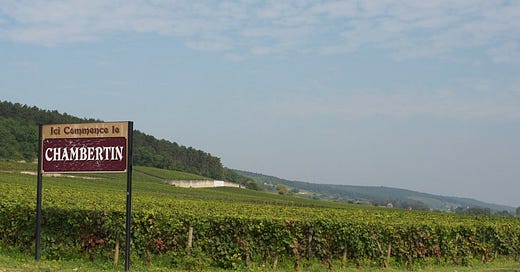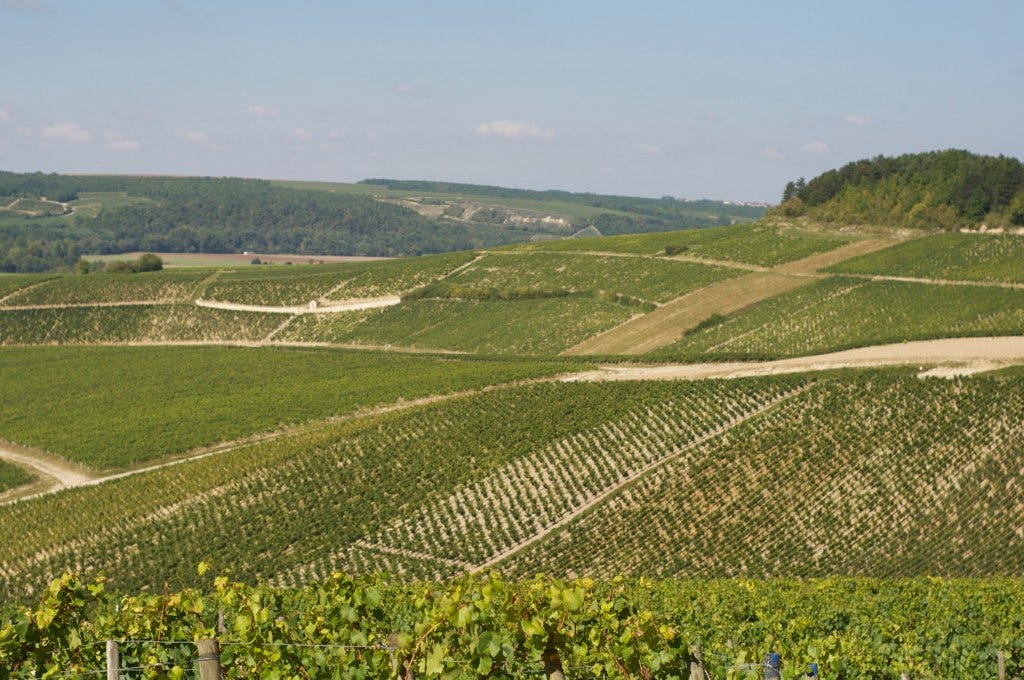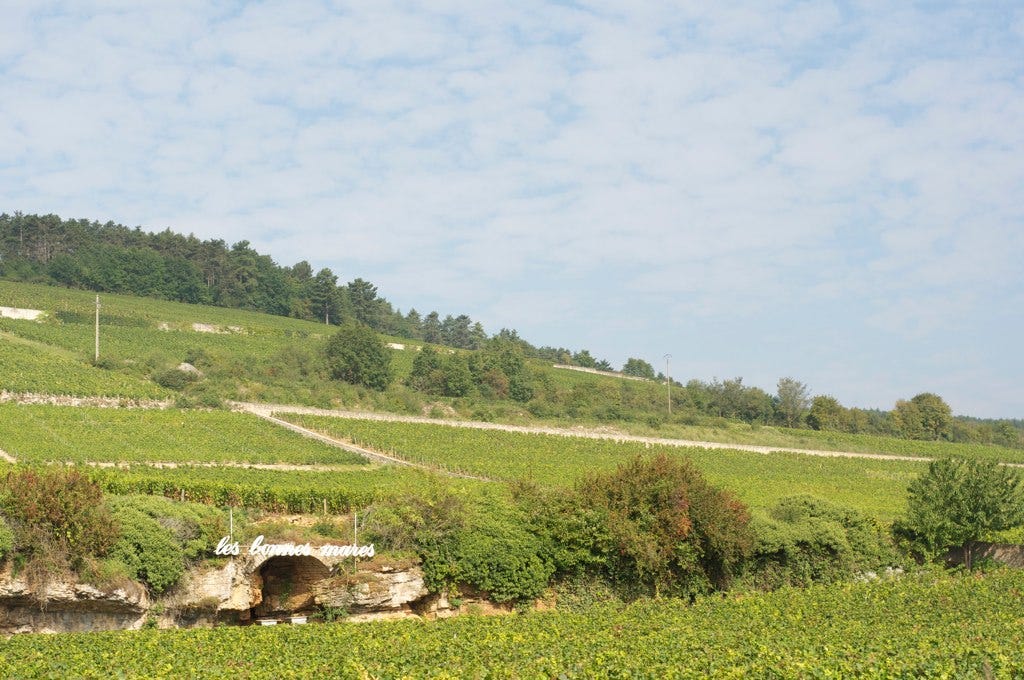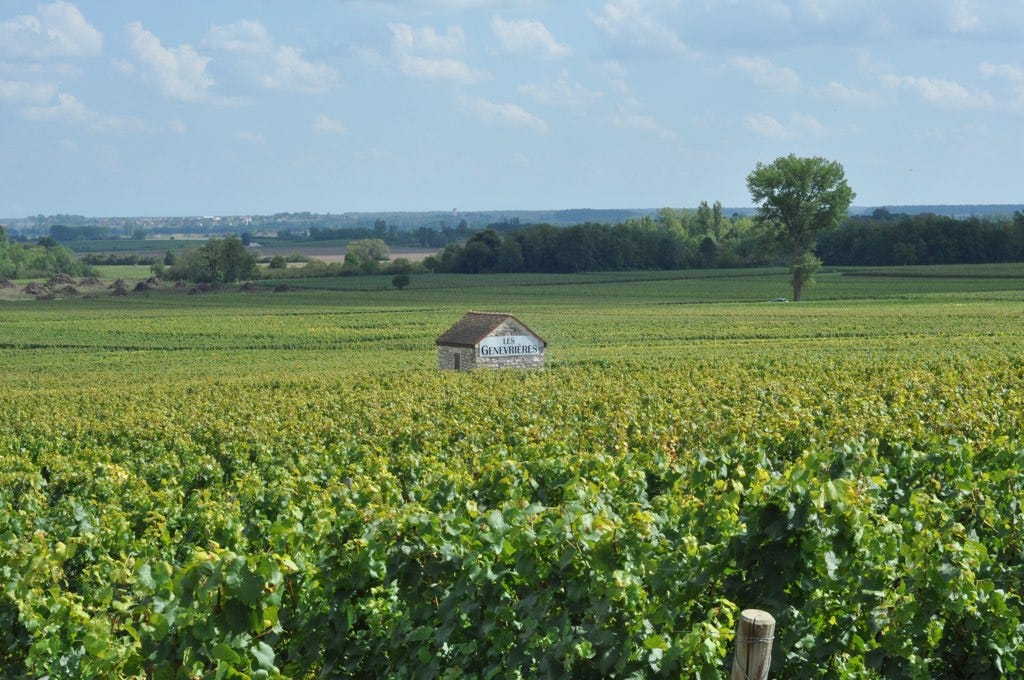Hello! If you are just picking up the Grape to Table newsletter, thanks so much for joining to learn more about wine, food, and life. There’s lots to read – from my origin story (click here to read) to fun content focused on meaningful time at the table with delicious wine and food like my holiday tips! For now, my newsletter is free and you can find all the content by clicking here – basically a little Grape to Table website created by the great folks at Substack. I did realize recently that you only see the various categories of past newsletters if you open this link in a browser (rather than the Substack app). It’s a shame because the categories make it easy to find content you might be interested in…so here are some more embedded links! Click here for Wine Tips. Click here for Recipes. Click here for Q & As. As always I really appreciate when you hit the like button as it helps get the content in front of more people :) and spread the joy of wine and food!
Well yes, the holidays are fully upon us, and even in my new chapter where I do not deal with the mad glory of holiday wine retail I still feel the crunch! And I am guessing you do too! So, here I am telling you to go do something nice for yourself. We all have our happy places when it comes to food and drink. For some it may be their mom’s mac and cheese. For others it might be the splurge of a truly delicious store bought eggnog (they do exist!). But for me I cannot lie, it's wine from the Burgundy region of France. Some of this adoration comes from my nearly lifelong love of France. The remainder comes from truly craving the mineral driven white and red wines from this iconic place. And all of this was signed, sealed, and delivered after an amazing trip there in 2014.
So yes, more than likely, a wine (or two or three) from Burgundy will be my treat this holiday season. Of course, I am not alone amongst fellow wine nerds in exalting Burgundy. But I would like to note I am here not just for the uber fancy bottles but also the more “entry level” offerings. In fact, there’s sometimes such pressure put on the hyper precious wines to live up to the hype that often I am just as happy opening a bottle of Bourgogne Rouge or Blanc. So what does that even mean? Well, here’s my present to you, my Burgundy Primer to whet your palate. (Speaking of Wine Primers – I did just announce my new series of in-person classes here in Charleston, SC. Click here for ticketing website with all the classes and all the details. And don't forget it's 50% off if you work in food & bev so email me sarah@grapetotable.com for that discount code if that applies to you!
Now back to Burgundy…
I love discussing Burgundy as it is one of the most intriguing but confusing regions when you start off on your wine journey. There’s such an intense catalog of sites thanks to the monks who worked this land hundreds of years ago.
Burgundy is located southeast of Paris and stretches from Chablis in the north to Beaujolais in the South. Many would argue that Beaujolais is really a separate region with a different grape focus (Gamay) and different bedrock (granite). A lot of books treat Beaujolais separately, and due to the complexity of all this, I will indeed save it for another newsletter!
Chablis is also quite distant from the “heart” of Burgundy, but they do share a limestone bedrock (thanks to a shallow sea millions of years ago) and a focus on Chardonnay as the star white grape. They also both have a hierarchy of sites whose peak is Grand Cru. Here in Chablis though, it is all about Chardonnay and Chardonnay only vs. the “heart” of Burgundy where you will also find red wines (and whites from the Aligote grape).
But back to Chablis, it really is a great discovery for those who love mineral driven white wines as it is still quite well priced compared to more expensive sites in the heart of Burgundy. It is also the cutest little village to visit if you have the chance! The Grand Cru hillside literally rises up from one end of the village (just across the Serein River), and you can spend an afternoon hiking through its seven vineyards and checking out the plethora of limestone that is everywhere. Maybe you will even find a fossil :)
3 Tier Hierarchy of Appellations in Chablis:
Grand Cru
Chablis (includes Premier Cru)
Petit Chablis (on Portlandian; younger limestone)
Chablis Grand Cru Vineyards (relatively north to south)
Bougros
Les Preuses
Vaudesir
Grenouilles
Valmur
Les Clos
Blanchot
Moving south from Chablis we find the aforementioned “heart” of Burgundy, the Côte d’Or, which translates to “Golden Slope.” Here we find Chardonnay and Pinot Noir in their happy place. This area is magical because there is a long stretch of vineyards in a relatively continuous line at the perfect mid-slope location. In the fall the leaves turn gold and red, hence Golden Slope!
The Côte d’Or stretches 35 miles from the town of Dijon to the village of Santenay. This is obviously not a long distance but contains over 500 appellations within this stretch! The area can be subdivided into the Côte de Nuits (northern half) and the Côte de Beaune (southern half). The most famed Pinot Noir in the world comes from the Côte de Nuits, and the most famed Chardonnay comes from the Côte de Beaune. But there are great examples of both varieties in both regions.
As mentioned, limestone is the geological foundation of this area and perhaps the key to its phenomenal wines (Pinot Noir loves limestone!) There is also clay mixed in with the pure limestone, and the clay becomes more dominant as you head east away from the slope and closer to the Saone River (pronounced "sohn").
Also as mentioned there is a similar hierarchy to Chablis:
4 Tier Hierarchy of Appellations:
Grand Cru
Premier (1er) Cru
Village
Regionale (Bourgogne Blanc & Bourgogne Rouge)
All of the top three levels will demand high prices. Even “village” level usually starts upwards of $50 (retail) these days. You might be questioning -- “village” level for such high prices? But in the Côte d’Or the village level wines are often of very high quality -- nearing Premier Cru status. So yes, they have the prices to match. (But look out for the intro tier of Burgundy wines -- Bourgogne Blanc and Bourgogne Rouge starting in the mid-thirties for better value!)
Now let’s dive into the two distinct subregions of the Côte d’Or: the Côte de Nuits (northern half) and the Côte de Beaune (southern half).
Côte de Nuits
The Côte de Nuits runs loosely from just south of the city of Dijon down to just north of the city of Beaune (the commercial capital of the region for the wine trade), and it’s famed for Pinot Noir, but some Chardonnay can be found here as well. There are small villages that dot the landscape, and these will be referenced on the bottles. In many cases the village will append the name of a Grand Cru vineyard onto its name. IE: The village is Gevrey. Le Chambertin is one of its famed Grand Cru vineyards. Thus, on bottles and in conversation wine from this area will be referred to as Gevrey Chambertin. The bottle will also state the vineyard site and its hierarchical position (Grand Cru, Premier Cru…)
Note: here in the Côte de Nuits is where you will find one of the most famous producers of Pinot Noir in the world: Domaine de La Romanée Conti in Vosne-Romanée. They own the entire Grand Cru site of Romanée-Conti & La Tâche. They now command astronomical prices for their wines!
Côte de Nuits Villages (roughly north to south)
Marsannay
Fixin
Gevrey Chambertin
Morey-Saint-Denis
Chambolle Musigny
Vougeot
Flagey-Echezeaux
Vosne-Romanée
Nuits-Saint-Georges
Côte de Beaune
The Côte de Beaune runs roughly from just north of the city of Beaune around the village of Ladoix to the southerly village of Maranges. This area is famed for Chardonnay, but there are also star Pinot Noir producers/villages here. The villages reserved for red wine are Pommard and Volnay.
As mentioned, the city of Beaune is basically the capital of the Burgundy wine trade and a terrific place to stay if you are visiting. There are so many great restaurants here and a real bargain compared to Parisian prices. You can also rent bikes here and bike up and down the Côte d’Or on the tractor roads.
Note: the most famous regions in the world for Chardonnay are found in the Côte de Beaune: Puligny Montrachet and Chassagne Montrachet. They each lay claim to a portion of the famed Grand Cru Montrachet vineyard.
Côte de Beaune Villages (roughly north to south)
Aloxe-Corton
Pernand-Vergalesses
Savigny-les-Beaune
Chorey-les-Beaune
Beaune
Pommard
Volnay
Monthelie
Auxey-Duresses
Saint-Romain
Meursalt
Blagny
Puligny-Montrachet
Chassagne-Montrachet
St-Aubin
Santenay
Maranges
Côte Chalonnaise
This is south of the Cote de Beaune; however it is less protected from wind and consequently can be cooler (and harvest can be later.) Also, the vineyards are not as continuous (rather they are distributed over scattered hills.) All of this equals lower quality and more vintage variation!
5 Main Villages of Chalonnaise (roughly north to south)
Bouzeron: Aligote only (the “other” white grape of Burgundy)
Rully: a lot of sparkling production
Mercury: more Pinot Noir
Givry: more Pinot Noir
Montagny: Chardonnay only
Maconnais
This is south of the Chalonnaise, and it is the center for large scale production of Chardonnay. You see very little red here, and it is more likely to be Gamay than Pinot Noir. While there can be lesser quality wines found here there can also be absolutely delicious wines at a range of price points from affordable Macon Villages to expensive and ageworthy Pouilly Fuissé.
5 Main Villages of the Maconnais (roughly north to south)
Vire Clisée: newest
St-Veran: rivals Pouilly Fuisse in size and production if not quality
Pouilly-Loché
Pouilly Vinzelles
Pouilly Fuissé: star of the region; limestone amphitheater that makes for easier ripening conditions
While it is VERY difficult to name favorites within this iconic region I do plan on a follow-up newsletter with some of my favorites! But as usual I recommend heading to your local bottle shop and starting your own Burgundian journey there!
Happy holidays and happy sipping!









Fantastic primer on burgundy! Thanks for describing it so clearly, I will safe for future reference and perhaps treat myself to a few special bottles this holiday. Hoping yours are Merry and Bright!